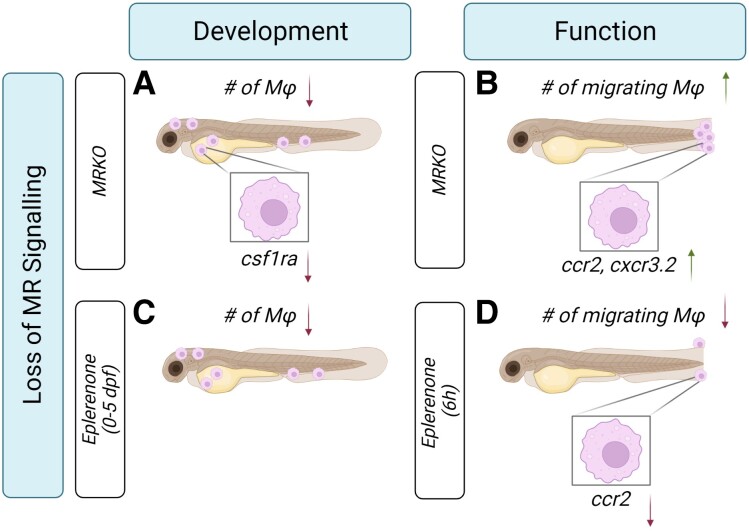Figure 8.
Summary schematic of the different roles of mineralocorticoid receptor (MR) in modulating the development and function of macrophages in zebrafish. A reduction in MR signalling in zebrafish, either through genetic perturbations or pharmacological antagonism, leads to altered macrophage responsivity to developmental and inflammatory signals, showing that MR is crucial for macrophage development and function. (A) During a key developmental period (0-120 hours postfertilization [hpf]), larvae lacking MR (MRKO) experience a global reduction in whole-body macrophage numbers. This is associated with a lack of production in the yolk and distribution out of the yolk, and these macrophages show reduced transcript abundance of the colony-stimulating factor receptor 1 (

